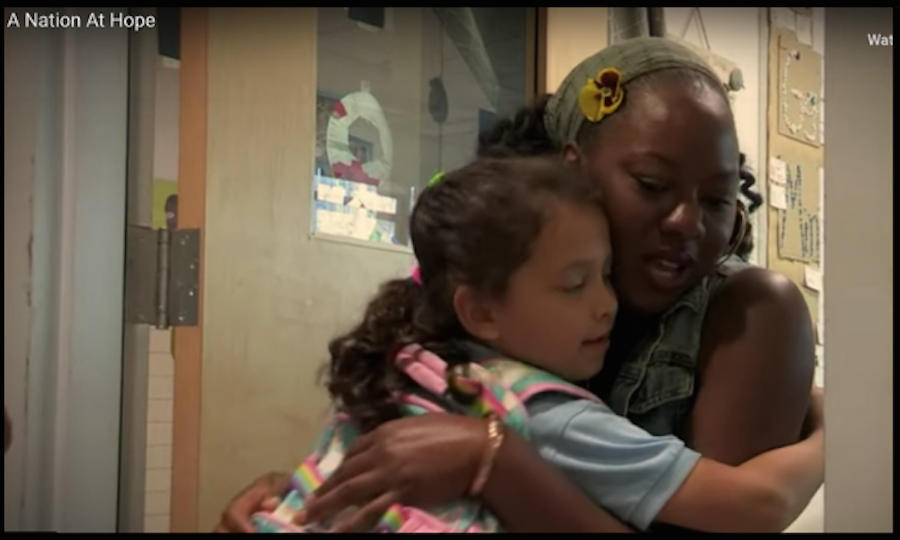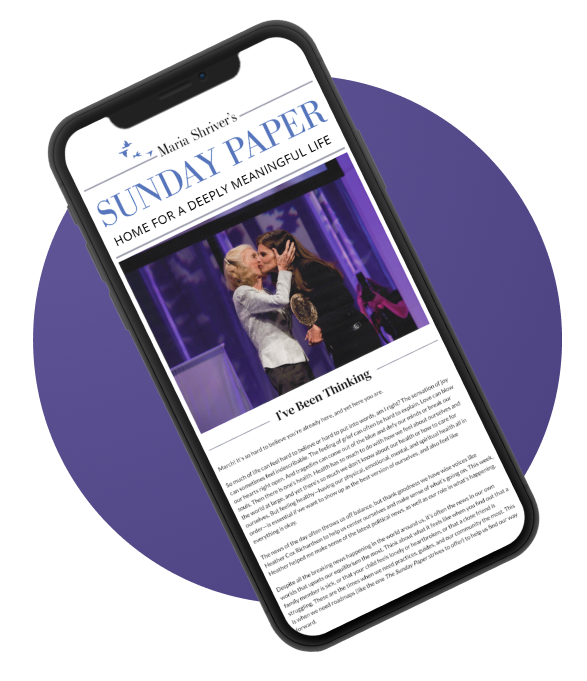The Aspen Institute Releases Report Revealing We Are a ‘Nation of Hope’

Our nation is at a turning point. We now understand that social, emotional, and cognitive development underpin children’s academic learning. This breakthrough in understanding how people learn is fueling a growing movement to educate children as whole people with social and emotional as well as academic needs.
That’s the message of “From a Nation at Risk to a Nation at Hope,” the final report and recommendations from the Aspen Institute National Commission on Social, Emotional, and Academic Development. To tell us more about the report and what it takes to support the whole learner, we connected with Stephanie Jones, a professor of child development and education at the Harvard Graduate School of Education and a member of the Commission’s Council of Distinguished Scientists; and Chris Poulos, the 2007 Connecticut Teacher of the Year and a member of the Commission’s Council of Distinguished Educators. You can find the report and videos showing this work in action at www.nationathope.org.
1) The report is titled “From a Nation at Risk to a Nation at Hope.” What does that mean exactly?
Stephanie: This is a great question because the title is a bit unconventional. In the field of education, we are certainly a nation with hope. We’re hopeful because we have decades of rigorous science at our backs, which shows that learning is social, emotional, and academic. We have a wealth of strategies, practices, and approaches that we know will help students develop this full array of skills, and we have actionable policy levers we can pull. What we’re ready for now is action. And that’s what we want the title to convey. A nation at hope is a nation that is ready, willing, and able to act, and that is what this report is calling all of us to do.
2) How was the study conducted and what did it entail?
Stephanie: The process of building the Commission’s recommendations was one of collaboration and consensus building. The Commission launched in 2016 with the goal of hearing from a variety of voices. That’s why the Commission includes scientists, educators, students, parents and caregivers, and community leaders. And the Commission was committed to listening and learning from people on the ground who are working with young people on a daily basis. So we visited Cleveland, Austin, and other communities that are doing great work. One thing the Commission did, which was exciting for me, was to connect researchers like myself with educators who work directly with students. We had frank conversations about how research does and doesn’t support educators’ work, and those conversations led to the development of our research recommendations, which call for bridging the divide between research and what happens in our classrooms, schools, and communities.
3) What does giving children a social and emotional education, alongside academics, look like in practice?
Chris: At Joel Barlow High School, for example, we provide all ninth graders with explicit social and emotional lessons in their health and wellness classes to help them build a foundation in emotional literacy. As our students progress through high school, we then integrate these concepts in their classes across academic disciplines. For example, in AP English, students contemplate how Hamlet’s decision-making might have been different if he were able to regulate his emotions. As a follow-up, students consider their own strategies for staying focused and making rational choices and how they can use those strategies to engage more successfully in relationships with family and friends. In the Commission’s report, we also share the example of San Francisco’s mathematics curriculum, which is taught using the principles of “growth mindset,” problem-solving, and persistence. This means that students are taught to expect and embrace math mistakes as learning opportunities, similar to the process of revising writing in an English class.
4) How do the report’s recommendations differ from current standards in American schools?
Chris: From a Nation at Risk to a Nation at Hope does not suggest that we change our current academic standards or add another component to what we do, but rather that we purposefully teach and learn with a focus on the whole child. The report acknowledges that the bottom line is that students are social and emotional creatures and so are their teachers. If students can understand and regulate their emotions more effectively, and if they can work well with others, they’re going to learn more effectively. If teachers can do the same, they’re going to teach more effectively.
In order to promote this focus on the whole child, it is essential to support teachers so that they can support students. To this end, schools and districts must prioritize training and professional development that enable educators to address their students’ social and emotional learning needs.
5) Can you cite some examples of success stories in schools where these recommendations are already in place?
Chris: Research shows that a focus on social and emotional learning leads to better student outcomes, and we’ve seen this firsthand at Joel Barlow High School. When we began this work, we piloted lessons with half of the ninth grade class that focused on helping students to recognize, understand, label, express, and regulate their emotions. The result: Nearly ten percent more of the students who received these lessons improved their GPAs from the first to the third quarter, as compared to their peers who did not participate in the pilot. The Commission also shares stories of success at the district and community levels. After Tacoma, Washington implemented a community-wide effort focused on the whole child, the district’s graduation rates rose from 55 percent in 2010 to 89 percent in 2018. We believe that if teachers, administrators, and communities work together, we’ll improve outcomes for kids and better prepare them for life in the workplace and in their families, allowing young people to live the lives they dream as they move beyond school.
6) What are the report’s recommendations for how to implement this in more local communities across America?
Stephanie: The Commission makes six main recommendations for how schools and communities can better support young people’s learning and growth:
- Set a vision for student success that prioritizes the whole child
- Transform learning settings so they are physically and emotionally safe and foster strong bonds among students and adults.
- Change instruction to teach students social, emotional, and cognitive skills. Embed these skills in academics and schoolwide practices.
- Build adult expertise in child and adolescent development.
- Align resources and leverage partnerships across schools, families, and communities to address the whole child.
- Forge closer, more dynamic connections between research and practice.
Together, what these recommendations are calling for is a paradigm shift in how the work of educating and supporting young people gets done. What this is fundamentally about is a bottom-up approach to students’ social, emotional, and academic development that starts with community needs and values and rests on collaboration.
For more information about The Aspen Institute: National Commission on Social, Emotional, and Academic Development click here.
This piece was featured in the Jan. 20th edition of The Sunday Paper, Maria Shriver’s free weekly newsletter for people with passion and purpose. To get inspiring and informative content like this piece delivered straight to your inbox each Sunday morning, click here to subscribe.
READ MORE STORIES THAT MOVE HUMANITY FORWARD
READ MORE STORIES THAT MOVE HUMANITY FORWARD
SIGN UP FOR MARIA’S SUNDAY PAPER

